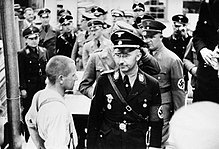
Euclides is a small lunar impact crater located near the eastern edge of Oceanus Procellarum, about 30 kilometers to the west of the Montes Riphaeus mountains. The mare in the vicinity is devoid of significant craters, but to the west is an area of low rises. The crater is named after the Greek mathematician Euclid.
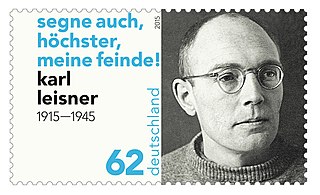
Karl Leisner was a Roman Catholic priest interned in the Dachau concentration camp. He died of tuberculosis shortly after being liberated by the Allied forces. He has been declared a martyr and was beatified by Pope John Paul II on 23 June 1996.

Hans Fischer was a German organic chemist and the recipient of the 1930 Nobel Prize for Chemistry "for his researches into the constitution of haemin and chlorophyll and especially for his synthesis of haemin."

Adolf Pokorny was an Austrian dermatologist and aspiring Nazi. In the 1947 Doctors' Trial he was accused of war crimes and crimes against humanity for involuntary sterilization experiments on concentration camp prisoners, but he was acquitted.

Wilhelm Franz Josef Beiglböck was an internist Nazi physician and held the title of Consulting Physician to the German Luftwaffe (Airforce) during World War II. In the 1947 Doctors' Trial, he was tried and convicted of war crimes and crimes against humanity for conducting human experimentation involving seawater on prisoners at Dachau concentration camp; he was sentenced to 15 years imprisonment, but his sentence was commuted to 10 years and he was released in 1951. He was found dead in a stairwell in 1963.

Karl Franz Gebhardt was a Nazi physician and a war criminal. Gebhardt was the main coordinator of a series of medical atrocities performed on inmates of the concentration camps at Ravensbrück and Auschwitz. These experiments were an attempt to defend his approach to the surgical management of grossly contaminated traumatic wounds, against the then-new innovations of antibiotic treatment of injuries acquired on the battlefield.
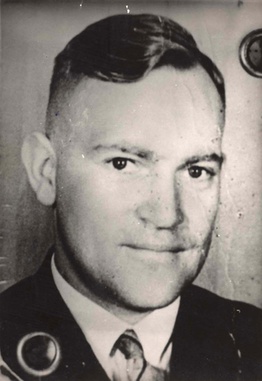
Horst Schumann was an SS-Sturmbannführer (major) and medical doctor who conducted sterilization and castration experiments at Auschwitz and was particularly interested in the mass sterilization of Jews by means of X-rays.
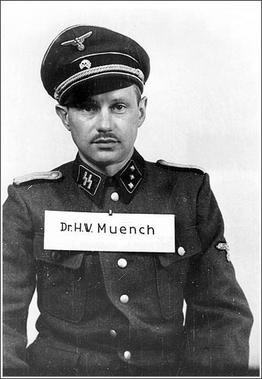
Hans Wilhelm Münch, also known as The Good Man of Auschwitz, was a German Nazi Party member who worked as an SS physician during World War II at the Auschwitz concentration camp from 1943 to 1945 in German occupied Poland. He was acquitted of war crimes at a 1947 trial in Kraków.
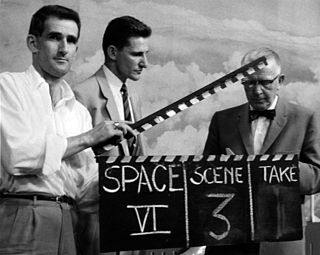
Hubertus Strughold was a German-born physiologist, and medical researcher. Beginning in 1935 he served as chief of aeromedical research for Hermann Göring's Ministry of Aviation and later held the same position with the German Luftwaffe throughout World War II. In 1947 he was brought to the United States as part of Operation Paperclip and went on to serve in a number of high-level scientific posts with the US Air Force and NASA.

Nazi human experimentation was a series of medical experiments on prisoners by Nazi Germany in its concentration camps mainly between 1942 and 1945. There were 15,754 documented victims, of various nationalities and age groups, although the true number is believed to be more extensive. Many survived, with a quarter of documented victims being killed. Survivors generally experienced severe permanent injuries.
Kurt Friedrich Plötner was a Nazi Party member and medical doctor who conducted human experimentation on Jews and Soviet prisoners of war in German concentration camps. American intelligence recruited him to work for the United States in 1945. He returned to the medical field as a professor at the University of Freiburg in West Germany after working for the United States and living under an alias.
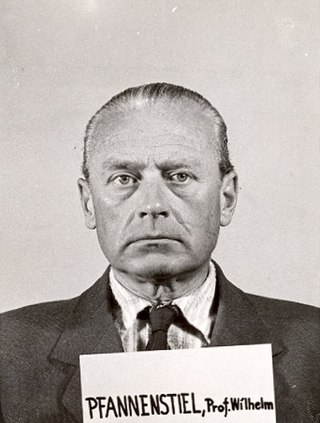
Wilhelm Hermann Pfannenstiel was a German physician, member of the Nazi Party from 1933,, and SS officer from 1934,. In August 1942 he witnessed, together with Kurt Gerstein, the gassing of Jews in Bełżec extermination camp. He may also share responsibility with other SS officials in criminal medical experimentations on unwilling and uninformed human beings, mainly Jews prisoners in Dachau concentration camp.
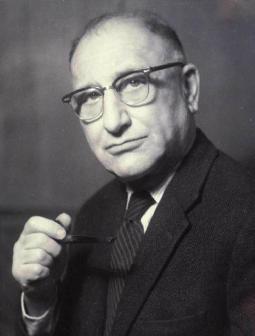
Hans Popper was an Austrian-born pathologist, hepatologist and teacher. Together with Dame Sheila Sherlock, he is widely regarded as the founding father of hepatology. He is the namesake of the Hans Popper Hepatopathology Society, as well as the International Hans Popper Award and the Hans Popper Hepatopathology Society.
Bruno Nikolaus Maria Weber was a German physician, bacteriologist and Hauptsturmführer (1944), at Auschwitz, in the branch of the Hygiene Institute of the Waffen SS. He was chief of the Hygienic Institute. He organized experiments involving the interaction of different human blood types in unwilling prisoner-patients. He also conducted experiments using barbiturates and morphine derivatives for mind-control purposes. He was made Obersturmführer der reserve on the 20th of April, 1943, SS-Sanitatsamt, and given the SS number 420759.
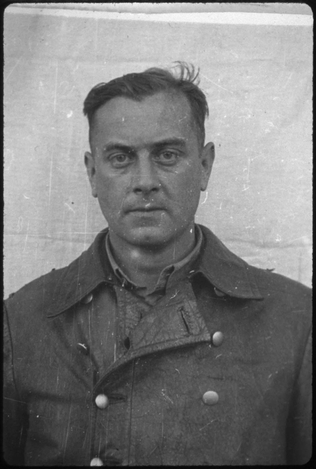
Hans Kurt Eisele was a German SS-Hauptsturmführer and concentration camp doctor.
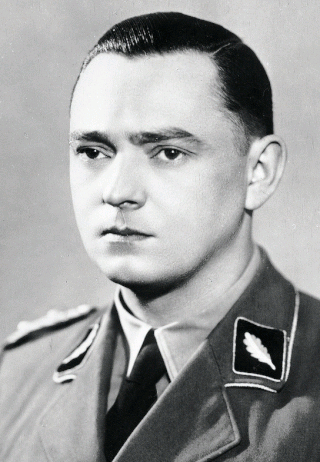
Horst Böhme was a German SS functionary during the Nazi era. He served in the SD, the intelligence service of the SS, and was a leading perpetrator of the Holocaust.

Ernst Holzlöhner was a German physiologist, university lecturer, and Nazi involved in the Nazi experiments on humans.

Karel Sperber OBE (1910–1957) was a Jewish Czechoslovak surgeon who travelled to England after the Nazi invasion of his country, but unable to practice medicine because he was an alien, took a job as a ship's doctor instead and was captured by Axis forces when his ship was sunk by the Germans.

Andreas Ludwig Joseph Heinrich Jeitteles or, in Czech, Ondřej Ludvík Jeitteles was a Czech physician, author of medical literature, journalist, politician, poet and writer; under the pseudonym, Justus Frey.
Helmuth Vetter was an SS-Hauptsturmführer and a Nazi war criminal.

